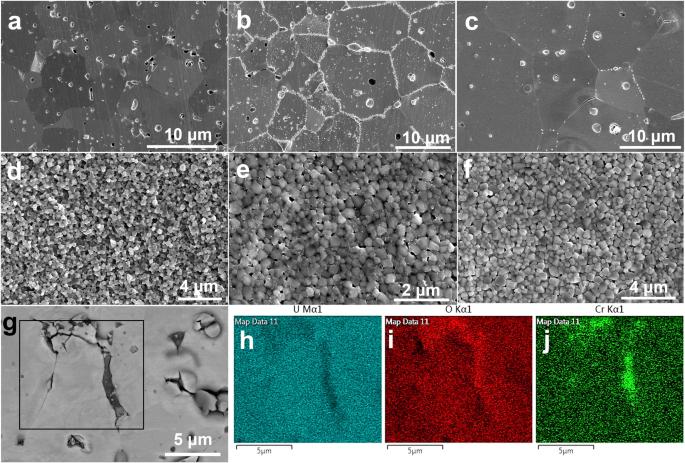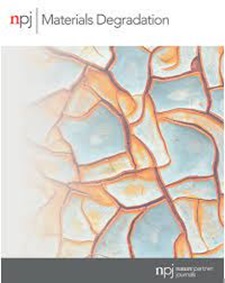具有可控微观结构和 Cr2O3 添加剂的氧化物燃料的瞬态行为
IF 7.6
2区 材料科学
Q1 MATERIALS SCIENCE, MULTIDISCIPLINARY
引用次数: 0
摘要
微观结构和 Cr2O3 掺杂对氧化物燃料的热机械性能和断裂有深远影响。研究失芯事件(LOCA)下核燃料的瞬态行为是一项挑战。在这项研究中,模拟原型 LOCA 加热曲线,测试了具有受控晶粒结构和掺杂 Cr2O3 的二氧化铀球团在快速功率斜坡(每分钟 300-900°C )下的裂纹行为。以每秒 8 ℃ 的升温速度升温到 1500 ℃ 时,致密的微米级二氧化铀球团显示出良好的完整性,没有出现裂纹。纯的和掺杂Cr2O3的致密纳米级二氧化铀颗粒都会发生断裂。晶粒尺寸较大(约 22.2 μm)的掺杂 Cr2O3 氧化物燃料颗粒在 LOCA 试验中表现最佳,因为它在高温下具有最高的热导率。有限元分析计算表明,在瞬态测试期间,燃料芯块上会出现温度梯度,从而导致残余应力和裂纹,这与其热机械性能有关。本文章由计算机程序翻译,如有差异,请以英文原文为准。

Transient behavior of oxide fuels with controlled microstructure and Cr2O3 additive
Microstructure and Cr2O3 doping profoundly impact the thermal-mechanical properties and fracture of oxides fuels. It is a challenge to study the transient behavior of nuclear fuels under loss-of-coolant-event (LOCA). In this study, the crack behavior of UO2 pellets with controlled grain structure and Cr2O3 doping was tested with rapid power ramping (300−900 °C per min) mimicking a prototypical LOCA heating profile. Dense micron-sized UO2 pellets display well-maintained integrity without cracking with the ramping up to 1500 °C at a heating rate of 8 °C per second. Fracture occurs in both pure and Cr2O3-doped dense nano-sized UO2 pellets. The Cr2O3 doped oxide fuel pellet with a larger grain size (~ 22.2 μm) displays the best performance under LOCA testing due to its highest thermal conductivity under high temperature. FEA calculations suggest a temperature gradient across the fuel pellet during transient testing, resulting in residual stress and cracking, which can be correlated with their thermal-mechanical properties.
求助全文
通过发布文献求助,成功后即可免费获取论文全文。
去求助
来源期刊

npj Materials Degradation
MATERIALS SCIENCE, MULTIDISCIPLINARY-
CiteScore
7.80
自引率
7.80%
发文量
86
审稿时长
6 weeks
期刊介绍:
npj Materials Degradation considers basic and applied research that explores all aspects of the degradation of metallic and non-metallic materials. The journal broadly defines ‘materials degradation’ as a reduction in the ability of a material to perform its task in-service as a result of environmental exposure.
The journal covers a broad range of topics including but not limited to:
-Degradation of metals, glasses, minerals, polymers, ceramics, cements and composites in natural and engineered environments, as a result of various stimuli
-Computational and experimental studies of degradation mechanisms and kinetics
-Characterization of degradation by traditional and emerging techniques
-New approaches and technologies for enhancing resistance to degradation
-Inspection and monitoring techniques for materials in-service, such as sensing technologies
 求助内容:
求助内容: 应助结果提醒方式:
应助结果提醒方式:


